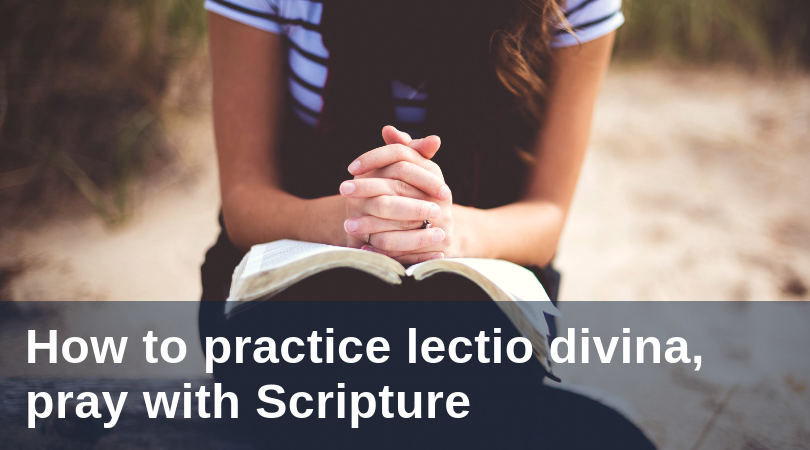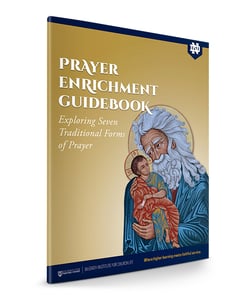
The phrase lectio divina means “divine reading” in Latin and is a fitting name for this prayer practice of listening to Scripture with the ear of the heart. Lectio divina (often called “lectio” for short) is a dialogue with God through Scripture that includes the whole self: thoughts, images, memories, desires, etc. The movements within lectio divina involve reading, listening to, responding to and resting in the Word of God. It can be practiced alone or with a community.
The origins of lectio divina
With encouragement from the Church Fathers, lectio divina entered the daily prayer of the early monastic communities in the 6th century as a way of communicating with God through Scripture. It has developed over time into the practice we know today of reading God’s Word and attending to his presence therein. The four movements within lectio divina are reading, meditation, prayer and contemplation.
“Above all it’s the Gospels that occupy my mind when I’m at prayer; my poor soul has so many needs, and yet this is the one thing needful. I’m always finding fresh lights there, hidden and enthralling meanings.” - St. Thérèse of Lisieux
Why you might pray with lectio divina
Lectio divina encourages us to become receptive to the divine Word in order to form us into the image of Christ. Pope Francis speaks of lectio divina in Evangelii Gaudium as a “way of listening to what the Lord wishes to tell us in his Word and of letting ourselves be transformed by the Spirit” (152). If you desire to incorporate more Scripture into your prayer life and pay closer attention to the movements of God, lectio divina might be a place to start.
How to practice lectio divina
Select a Scripture passage
Before starting your prayer, select a passage from Scripture to use for your lectio divina. It can be from the Old or New Testament, but it shouldn’t be too long. The length of a reading from Mass works well. Often, people choose to pray with a reading from the day’s Lectionary or the Mass for the upcoming Sunday.
Prepare for prayer
Before entering into the prayer, prepare yourself physically and mentally. Begin by sitting comfortably, placing both feet on the ground, with posture upright and hands open on your lap as if waiting to receive a gift from God. Then, abandon any agenda, worries or thoughts you bring to this prayer and entrust these things to the providence of God. Ask for the grace to be receptive to what God will speak to you through this Scripture reading.
Read (lectio)
Begin by slowly and meditatively reading your Scripture passage out loud. Listen for a particular word or phrase that speaks to you at this moment and sit with it for a time.
Meditate (meditatio) - Read the same passage a second time. As you re-engage the text, let the word or phrase that stood out become your invitation to dialogue with God. Allow the word or phrase to wash over you and permeate your thoughts and feelings.
Pray (oratio) - Read the text a third time. What is God saying to you in these words? What do you want to say to God? What feelings do these words raise up in you? Share your answers with God.
Contemplate (contemplatio)
Read the text a final time. As you do, release the word or phrase you have been praying with. Be still and rest in God’s embrace. What gift has God given you to take away from this prayer? To what action might God be inviting you? Thank God for this gift and invitation as you conclude your prayer.
Download the complete Prayer Enrichment Guidebook
 This article is the first installment of our seven-week Prayer Enrichment Series which comes directly from our free Prayer Enrichment Guidebook.
This article is the first installment of our seven-week Prayer Enrichment Series which comes directly from our free Prayer Enrichment Guidebook.
The Prayer Enrichment Guidebook introduces seven traditional styles of Catholic prayer, including lectio divina, the Examen and centering prayer.
The entry for each prayer practice introduced in this guidebook contains:
- A brief overview of the prayer practice
- Its origins
- Why one might practice it
- How one can practice it
This Prayer Enrichment Guidebook is an aid for all Christians to deepen their relationship with the Lord through new forms of prayer. It is an ideal supplement for Catholic teachers, catechists, ministers and anyone who seeks to encounter God in a new way.



